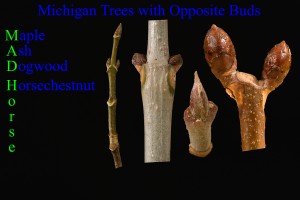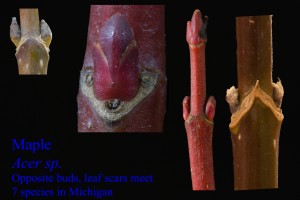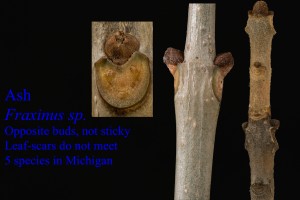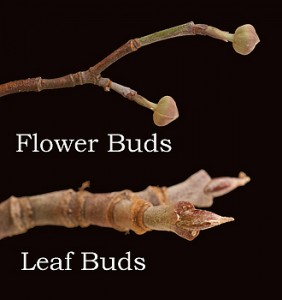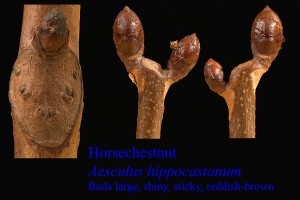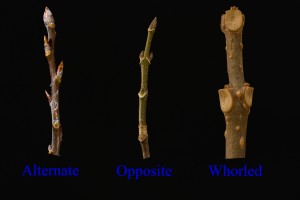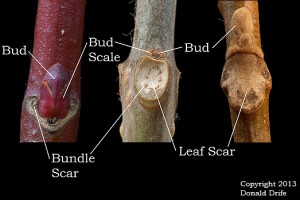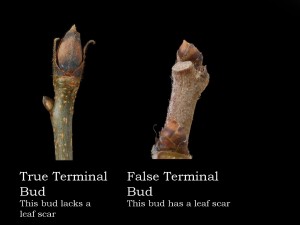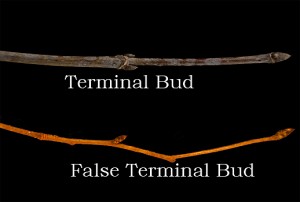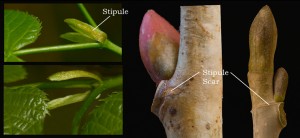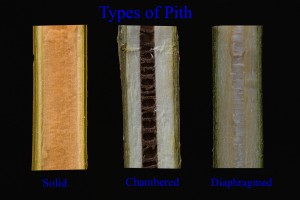If you find an opposite budded tree, growing wild in Michigan, it is either a Maple, Ash, Dogwood, or Horsechestnut (including the Ohio Buckeye). The mnemonic is MAD-Horse.
Maples have leaf scars that touch (or come close) and have three bundle scars. The buds are non-sticky and semi-pointed.
In Ashes, the leaf scars don’t touch and the buds are round. The bundle scars are in a “C” shaped pattern.
Two species of Dogwoods in Michigan are trees. The Flowering Dogwood is the one with opposite buds. It has greenish twigs (sometimes they turn red toward spring) with whitish hairs. The leaf buds are narrow and pointed. Most of the Flowering Dogwoods will show their characteristic rounded flower buds on short stalks called peduncles.
The Horsechestnut is a non-native tree that escapes into the woodlots of southern Michigan. Its native range is part of Europe and Asia. Look for the large, reddish, and sticky buds. The Ohio Buckeye is native in southern Michigan. Its buds are brown and more pointed than the Horsechestnut.
For more information, consult Michigan Trees by Burton V. Barnes and Warren H. Wagner, Jr. It is an excellent field guide including all of Michigan’s trees with descriptions of them in every season.
Back to The Michigan Nature Guy Homepage

